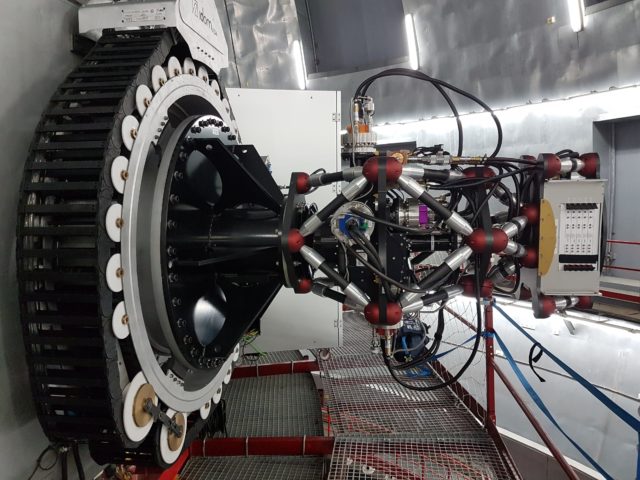High-speed camera developed in UK ‘is game changer for observation of universe’
The HiPERCAM will provide ‘a unique new view of the universe’, according to researchers from Sheffield University.

A 3.5 million euro camera will provide “a unique new view of the universe” now it has been installed on the world’s largest telescope, according to the British team behind the project.
HiPERCAM, which will take high-speed images of objects in the universe on the Gran Telescopio Canarias (GTC), is “game-changing”, a Government minister has said.

Prof Dhillon said the images produced will allow the dead remnants of stars – white dwarfs, neutron stars and black holes – to be studied in unprecedented detail.
These objects have extreme gravities, densities and pressures which allow researchers to test theories of fundamental physics, such as general relativity and quantum mechanics, he said.
By observing objects in our Solar System passing in front of background stars, HiPERCAM will also teach scientists about the sizes and shapes of the minor planets beyond Pluto’s orbit, and whether or not they possess atmospheres, rings and satellites.

HiPERCAM can take one picture every millisecond.
The professor said: “The high speed essentially provides a slow-motion view of rapidly varying celestial objects.
“The high-speed images are also captured in five different colours simultaneously, which means we can instantly tell the difference between hot stars – which are burning at tens of thousands of degrees Celsius and are blue in colour – and cooler stars, which appear red and are burning at only a few thousand degrees.”
The GTC is the world’s largest optical telescope with a 10.4 metre mirror diameter. It is situated 2,500 metres above sea level on the island of La Palma.
Martin Black, an optical engineer from the Science and Technology Facilities Council’s UK Astronomy Technology Centre (UK ATC) and part of the HiPERCAM team, said the camera had to be correctly positioned to around 30 microns – about the width of a human hair.
The HiPERCAM project is led by Prof Dhillon and his Sheffield team in partnership with the ATC and IAC and researchers from the University of Warwick and Durham University.
The pioneering five-year project was funded by a 3.5 million euro grant from the European Research Council (ERC).
Science and universities minister Sam Gyimah said: “This game-changing camera that will be installed on the world’s largest telescope will not only deepen our understanding of white dwarfs, neutron stars and black holes in our universe, but it will help maintain our reputation as being a global leader in research and development.”





